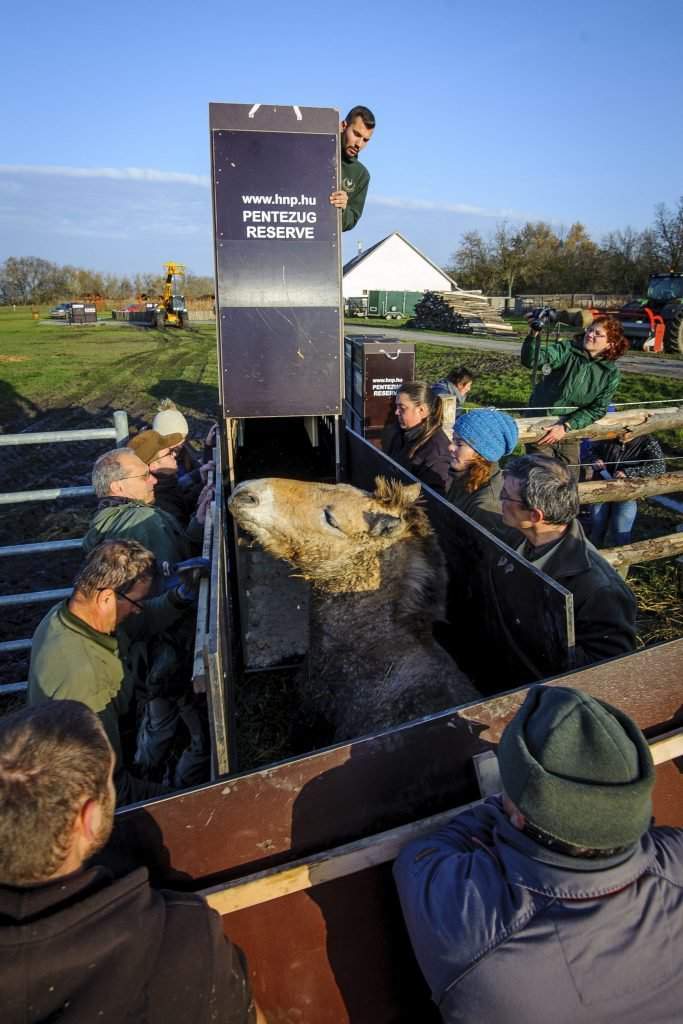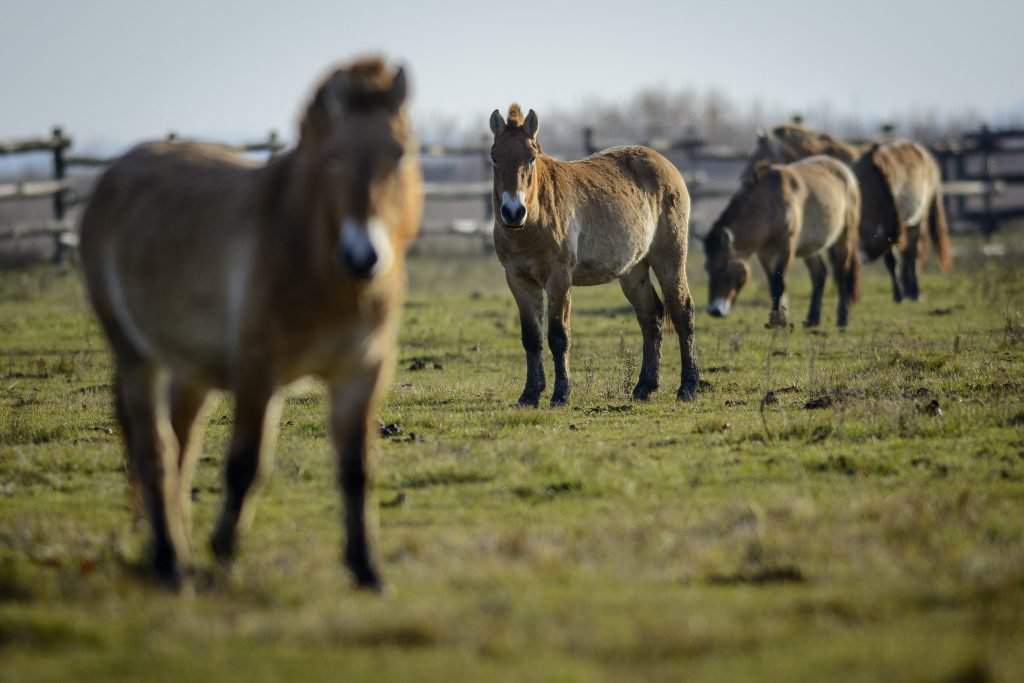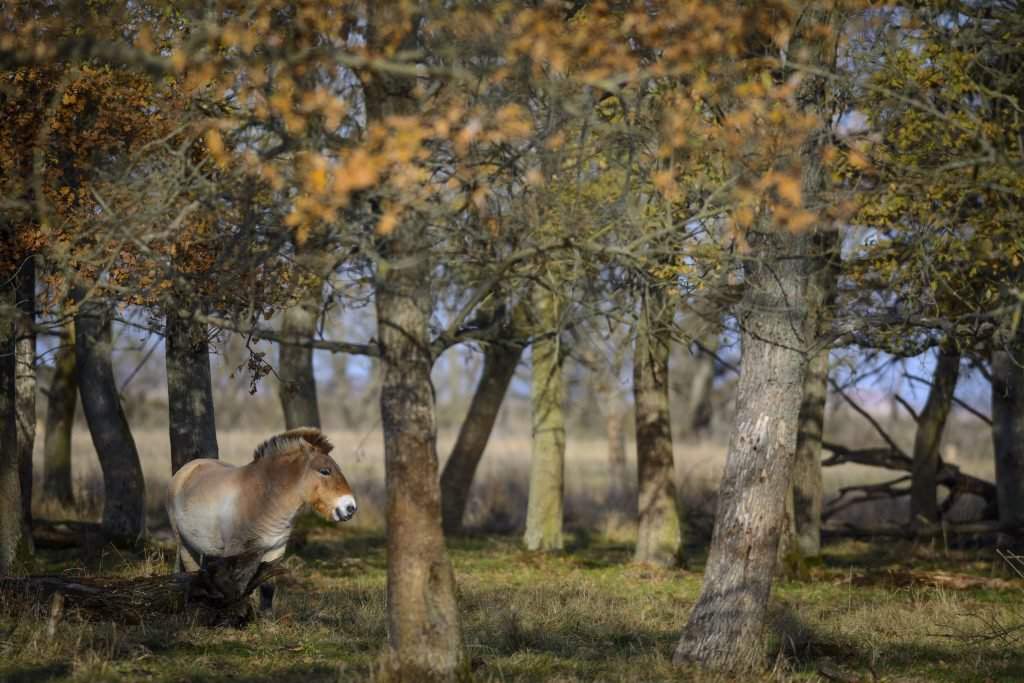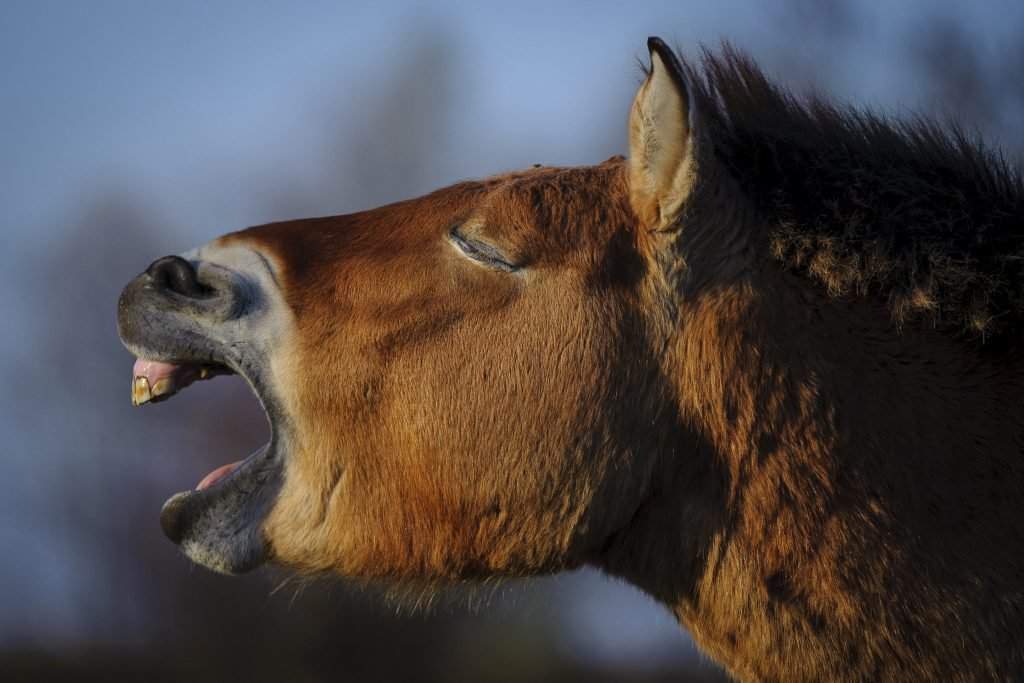Asian wild horses taken from Hortobágy to Russia – Photos

Asian wild horses are taken from the Hortobágy National Park to a wild horse reserve in Russia, reports érdekesvilág.hu. 15 Hortobágy raised Asian wild horses (Przewalski’s horse, Equus ferus przewalskii) are settled in the three thousands hectare reserve of Orenburg as part of the European Breeding Programme for Przewalski’s Horses. The Hungarian national park has a key role in saving the endangered species.
Przewalski’s horses have never been successfully domesticated, they still remained wild. Once, there were many kinds of horses that haven’t been successfully domesticated, such as the Tarpan, or the Onager horses. Most of them already died out, therefore Przewalski’s horses are the only actual wild horses in the world. The first 21 animals got to the Pentezug wild horse reserve in the Hortobágy National Park from the Cologne Breeding Program in 1997. The number of the animals was increased to 300 within 20 years. Pentezug Przewalski’s horse population is the largest wild horse population in the world.
The breeding of the horses was so successful that the increasing of the population had to be slown down a bit for today. There were many horses transported from Pentezug reserve to different places, like the Budakeszi Wildlife Park, a wild horse reserve in Austria, Mongolia or Russia.

Przewalski’s horses are short animals compared to today’s modern domestic horses: they are 124-145 centimetres high, 135 centimetres on average, and weight about 250-300 kilograms. They are powerful and stumpy. The legs are pretty short compared to the body; strong, but not bulky. The end of their legs and hooves is always black. Their colour is changing between two opposite types.
It is pale in every case, but while some of them are dark bay some others are much lighter, almost grey. The long hair of the tail is dark just like the mane, continuing on the back on the line of the spine, ending in the tail. Their main is not long and going on the side like the ones domestic horses have, but short and standing. The Przewalski’s horse’s tail seems to create a transition between the tails of donkey’s and half-donkey’s, as well as the domestic horse’s tail.
Photo: MTI
Copy editor: bm
Source: érdekesvilág.hu








